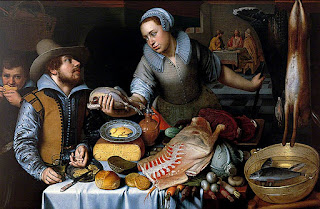 Ripening Pears first appear in late summer only to disappear early winter.
Ripening Pears first appear in late summer only to disappear early winter.The current World recession has resulted in economic hardship and unemployment for many. However, the suffering engendered by natural disasters such as the Haiti earthquake earlier this year, the floods in Pakistan and China in which millions of people face enormous challenges of survival are quite simply beyond the imagination and endurance of much of Western society. Such natural disasters firmly place mere economic hardship into perspective.
One wonders how many individuals in Western society who continue to enjoy a comfortable life-style could ever begin to cope with the suffering faced by those experiencing natural disaster. And yet our comfortable life-styles are often maintained by exploitation, inflicting great suffering upon innocent fellow humans, even if geographically remote, in the form of Warfare, military occupation of land and unfair trading conditions.
The Renaissance physician and alchemist Paracelsus possessed a deep insight into human nature. He was not only a radical doctor but also a theologian as profound as Luther; even though much of his writings remain untranslated from an obsolete Middle German dialect; nevertheless Paracelsus made important observations upon human nature worthy of contemplation.
The following quotation is exemplary of Biblical and alchemical notions of the trial of metals being likened to the testing of the human soul.
It is in extremis, things reveal their nature and become visible; then we can say: he is an upright man, a steadfast man, he manifests his inner being.....One man reveals more traits of loyalty and less of disloyalty; one man is to a large extent this, another man that. Therefore we should keep an eye on the outward characteristics which nature gives a man by shaping him in a certain way. For nature shapes the anatomy of a pear in such a way that the pear develops into a pear tree; and she creates a medlar's anatomy, in such a way that it develops into a medlar bush; and the same is true of silver and of gold. Nature also forges man, now a gold man, now a silver man, now a fig man, now a bean man.
Quotation from -Parcelsus Selected Writings ed. Jolande Jacobi Princeton Uni. Press 1951
One wonders how many individuals in Western society who continue to enjoy a comfortable life-style could ever begin to cope with the suffering faced by those experiencing natural disaster. And yet our comfortable life-styles are often maintained by exploitation, inflicting great suffering upon innocent fellow humans, even if geographically remote, in the form of Warfare, military occupation of land and unfair trading conditions.
The Renaissance physician and alchemist Paracelsus possessed a deep insight into human nature. He was not only a radical doctor but also a theologian as profound as Luther; even though much of his writings remain untranslated from an obsolete Middle German dialect; nevertheless Paracelsus made important observations upon human nature worthy of contemplation.
The following quotation is exemplary of Biblical and alchemical notions of the trial of metals being likened to the testing of the human soul.
It is in extremis, things reveal their nature and become visible; then we can say: he is an upright man, a steadfast man, he manifests his inner being.....One man reveals more traits of loyalty and less of disloyalty; one man is to a large extent this, another man that. Therefore we should keep an eye on the outward characteristics which nature gives a man by shaping him in a certain way. For nature shapes the anatomy of a pear in such a way that the pear develops into a pear tree; and she creates a medlar's anatomy, in such a way that it develops into a medlar bush; and the same is true of silver and of gold. Nature also forges man, now a gold man, now a silver man, now a fig man, now a bean man.
Quotation from -Parcelsus Selected Writings ed. Jolande Jacobi Princeton Uni. Press 1951



































